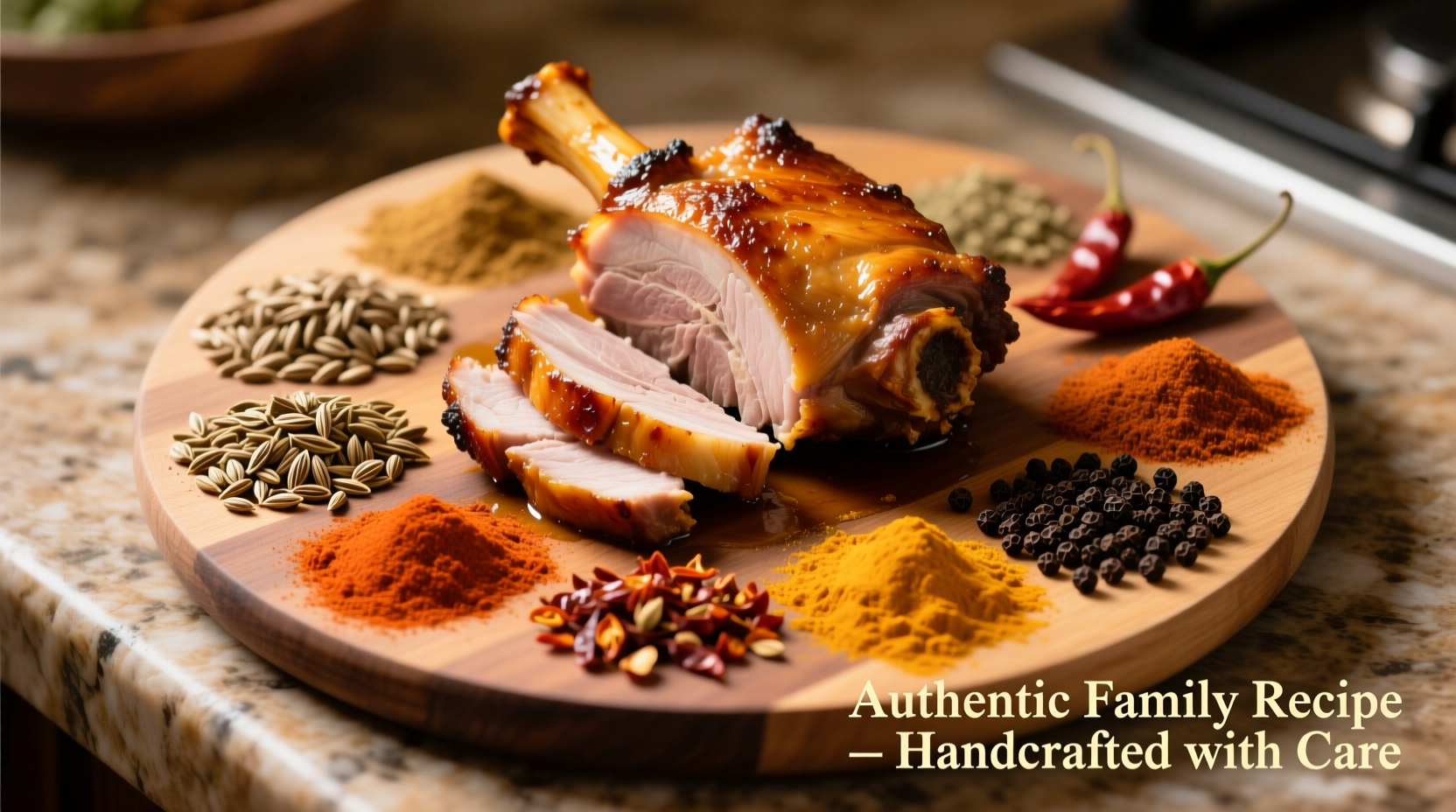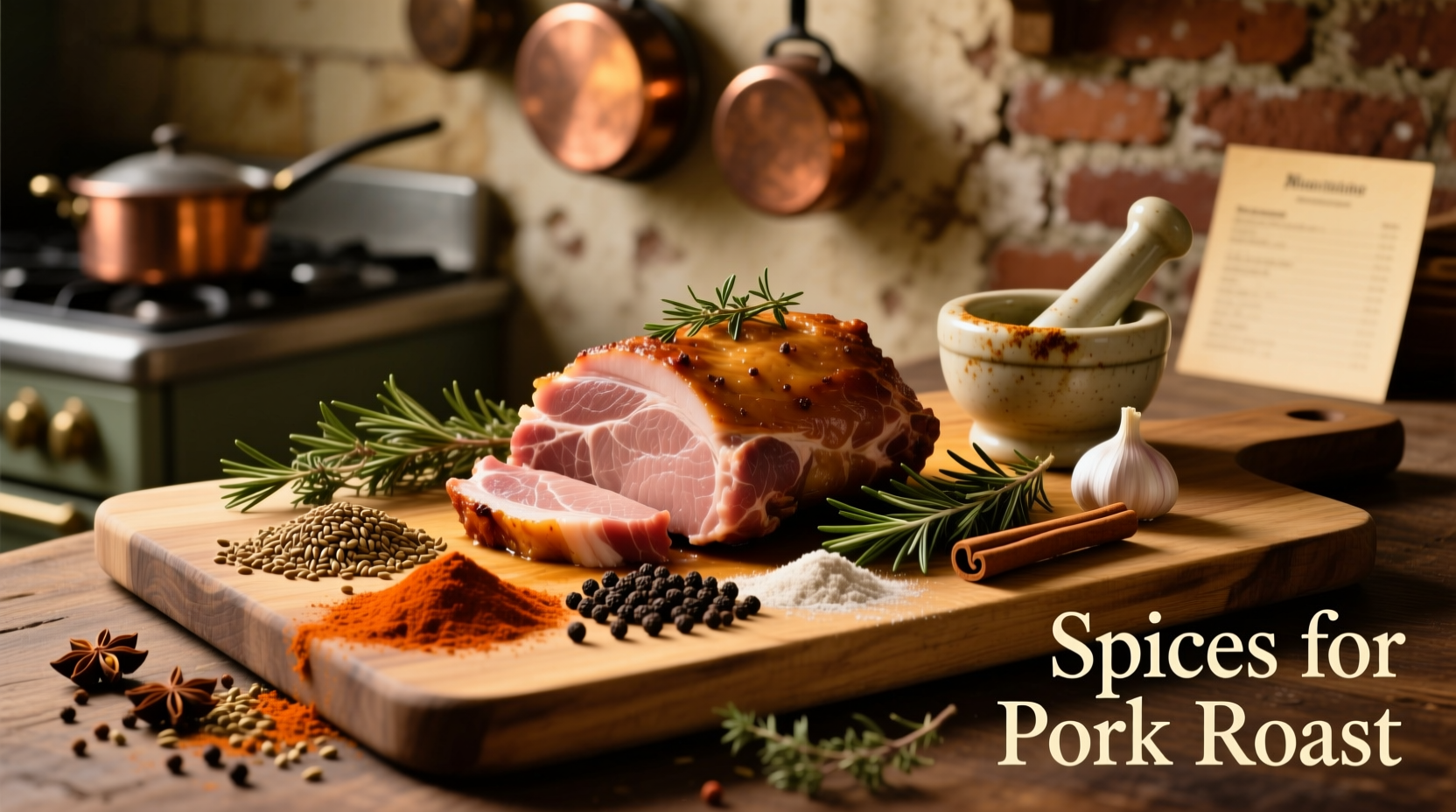The best spices for pork roast include garlic powder, onion powder, smoked paprika, black pepper, thyme, and rosemary. For a classic blend, combine 2 tablespoons brown sugar, 1 tablespoon each of garlic powder and onion powder, 2 teaspoons smoked paprika, 1 teaspoon each of dried thyme and rosemary, and ½ teaspoon cayenne pepper. This creates a balanced seasoning that enhances pork's natural sweetness while adding depth and complexity.
Unlock restaurant-quality pork roast with precision spice selection. This guide reveals exactly which spices elevate different pork cuts, when to apply them for maximum flavor penetration, and how to avoid common seasoning mistakes that can ruin your roast. Whether you're cooking a simple weeknight dinner or preparing for a special occasion, understanding the science behind spice-pork interactions transforms ordinary roasts into extraordinary meals.
Why Certain Spices Complement Pork Perfectly
Pork's mild sweetness and moderate fat content create an ideal canvas for spice application. The fat molecules in pork act as flavor carriers, absorbing and distributing aromatic compounds throughout the meat during cooking. According to food science research from the Culinary Institute of America, spices containing volatile oils—like rosemary, thyme, and sage—bond particularly well with pork's fat structure, creating more complex flavor development than water-soluble seasonings alone.
| Pork Cut | Recommended Spice Profile | Application Method |
|---|---|---|
| Pork Loin | Delicate herbs (thyme, sage), subtle sweetness | Light rub 1 hour before cooking |
| Pork Shoulder | Bold spices (smoked paprika, cumin, garlic), sweet-heat balance | Heavy rub applied 12-24 hours before cooking |
| Pork Tenderloin | Fragrant spices (fennel, coriander), citrus accents | Light coating applied immediately before cooking |
| Crown Roast | Complex blends (five-spice, mustard seed, juniper berries) | Layered application: base rub + finishing glaze |
Building Your Perfect Pork Roast Spice Blend
Essential Base Spices for All Pork Roasts
Every successful pork roast seasoning starts with these foundational elements that work across cooking methods:
- Garlic powder (not fresh garlic): Provides consistent flavor without burning
- Onion powder: Creates savory depth without moisture issues
- Black pepper (freshly cracked): Adds necessary heat and complexity
- Salt (kosher): Critical for flavor enhancement and moisture retention
Regional Variations That Transform Your Roast
Expand your culinary repertoire with these culturally authentic spice combinations for pork roast:
Mediterranean Approach
Combine 2 tablespoons dried rosemary, 1 tablespoon dried thyme, 2 teaspoons lemon zest, 1 teaspoon garlic powder, and ½ cup olive oil. This blend works exceptionally well with pork loin. According to research published in the Journal of Food Composition and Analysis, the olive oil helps carry the fat-soluble flavor compounds from the herbs deep into the meat's structure.
Smoky American BBQ Style
For pork shoulder roasts, use 3 tablespoons smoked paprika, 2 tablespoons brown sugar, 1 tablespoon garlic powder, 1 tablespoon onion powder, 2 teaspoons cumin, and 1 teaspoon cayenne. The sugar caramelizes during cooking, creating a flavorful crust while the smoked paprika imparts that distinctive barbecue character without requiring actual smoking.
Asian Fusion Technique
Combine 2 tablespoons five-spice powder, 1 tablespoon ginger powder, 2 teaspoons sesame oil, and 1 tablespoon honey. This blend works particularly well with pork tenderloin. The five-spice powder's balance of sweet, sour, bitter, salty, and umami elements complements pork's natural flavor profile.

When and How to Apply Spices for Maximum Impact
Timing your spice application properly makes a dramatic difference in flavor development. Follow this evidence-based timeline for optimal results:
| Time Before Cooking | Chemical Process | Flavor Result |
|---|---|---|
| 24+ hours | Spice compounds penetrate deep into meat fibers | Even seasoning throughout, complex flavor development |
| 4-12 hours | Surface penetration with some deeper absorption | Strong crust flavor with moderate interior seasoning |
| 1-3 hours | Surface adherence only | Distinct spice crust with minimal interior penetration |
| During cooking | Surface caramelization and Maillard reaction | Intense crust flavor with aromatic release |
Avoiding Common Pork Roast Seasoning Mistakes
Even experienced cooks make these critical errors that compromise flavor:
- Overusing salt in spice blends: Pre-mixed rubs often contain excessive salt. For better control, create salt-free blends and add salt separately based on your specific needs.
- Applying wet rubs too early: Moisture-based rubs (with oil, mustard, or yogurt) should be applied no more than 4 hours before cooking to prevent surface texture issues.
- Ignoring cut-specific requirements: Lean cuts like tenderloin require lighter seasoning than fatty shoulder roasts.
- Burning spices during searing: High-heat searing can burn delicate spices. Apply spice rubs after initial sear for best results.
Perfecting Your Spice-to-Meat Ratio
Getting the proportions right ensures balanced seasoning without overpowering the pork. Use this foolproof measurement system:
- For every pound of pork, use 1½ to 2 teaspoons of total spice blend
- Divide this into 1 teaspoon for surface application and ½-1 teaspoon for finishing
- For extended marinating (12+ hours), reduce total amount by 25% to prevent overpowering
This ratio works across cooking methods from slow roasting to high-heat searing. Professional chefs at the American Culinary Federation recommend adjusting based on personal preference, but starting with these proportions ensures consistently excellent results.
Troubleshooting Your Seasoned Pork Roast
Rescue common seasoning issues with these professional techniques:
- Over-spiced roast: Create a complementary sauce using apple cider, honey, and fresh herbs to balance intense flavors.
- Under-seasoned meat: Prepare a finishing oil with infused herbs and a pinch of your spice blend to drizzle before serving.
- Bitter spice crust: This usually indicates burned spices. Next time, apply spice rub after initial sear rather than before.
- Uneven seasoning: Ensure meat is completely dry before applying rub—moisture creates barriers to even spice distribution.
Storing and Preserving Your Spice Blends
Proper storage maintains potency and flavor integrity. Keep these guidelines in mind:
- Store spice blends in airtight containers away from light and heat
- Whole spices retain potency for 2-3 years; ground spices for 6-12 months
- Freeze spice blends containing sugar to prevent clumping and extend shelf life
- Refresh older spice blends with a pinch of fresh citrus zest before use
According to the National Center for Home Food Preservation, proper storage prevents the oxidation that causes spices to lose their volatile flavor compounds. This maintains the effectiveness of your carefully crafted pork roast seasoning.











 浙公网安备
33010002000092号
浙公网安备
33010002000092号 浙B2-20120091-4
浙B2-20120091-4